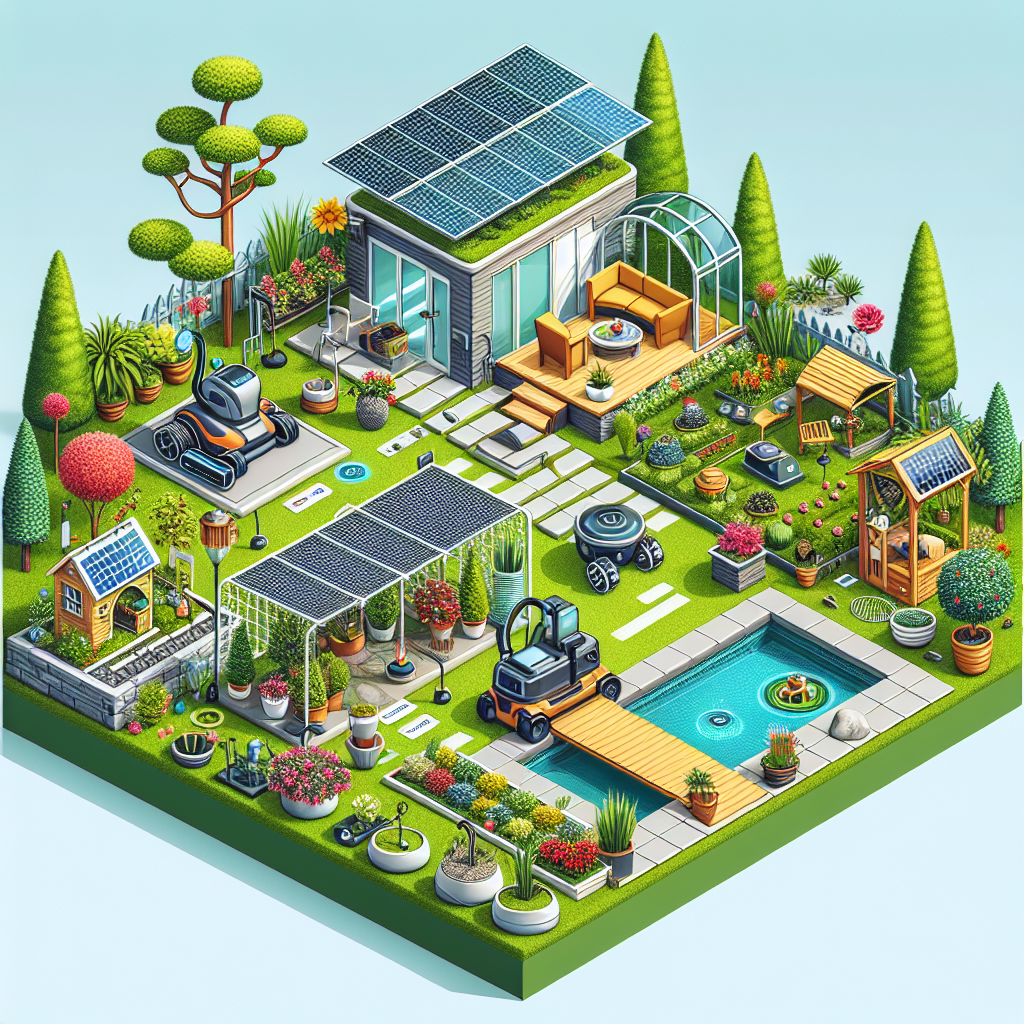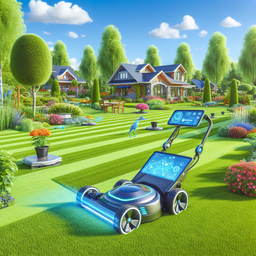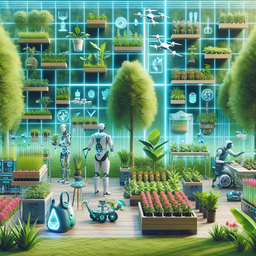Overview of Small Yard Landscaping
Small yard landscaping presents unique challenges and opportunities for homeowners looking to create beautiful outdoor spaces in limited areas. With the right design principles, plant selection, and maintenance strategies, even the smallest yard can be transformed into a lush and inviting oasis.
According to Brad Swanson, a landscape architect with over 20 years of experience, 'Small yards require a thoughtful approach to maximize space and functionality while enhancing visual appeal. Strategic design choices and plant selections are key to achieving a successful small yard landscape.'
Design Principles for Small Yard Landscaping
Maximizing Space with Vertical Gardens
Vertical gardens are an excellent way to add greenery and visual interest to small yards without taking up valuable ground space. By utilizing walls, trellises, or hanging planters, homeowners can create a lush garden in a limited footprint.
Creating Illusions of Depth with Pathways and Borders
Strategic placement of pathways and borders can create the illusion of a larger yard. Curving pathways and defined borders draw the eye along different areas of the yard, making it appear larger than it actually is.
Utilizing Focal Points for Visual Interest
Incorporating focal points such as sculptures, water features, or unique plants can add visual interest and draw attention away from the yard's size. By strategically placing focal points, homeowners can create dynamic and engaging outdoor spaces.
Plant Selection for Small Yards
Choosing Suitable Plants for Limited Space
When selecting plants for small yards, it's important to choose species that are well-suited to the space. Compact shrubs, dwarf trees, and low-growing perennials are excellent choices for adding greenery without overwhelming the yard.
Incorporating Evergreen Plants for Year-Round Appeal
Evergreen plants provide year-round interest in small yards, ensuring that the space looks inviting and vibrant no matter the season. Varieties such as boxwood, holly, and dwarf conifers are popular choices for their low maintenance and attractive foliage.
Implementing Container Gardening for Flexibility
Container gardening allows homeowners to easily swap out plants and experiment with different layouts in a small yard. Potted plants can be moved around to change the look of the space or accommodate seasonal blooms.
Hardscaping Solutions for Small Yards
Installing Functional Paving and Patios
Paving and patios serve as functional spaces for outdoor dining, seating, and entertaining in small yards. By choosing the right materials and layouts, homeowners can create inviting hardscaped areas that complement the surrounding landscape.
Incorporating Built-In Seating for Dual Purpose
Built-in seating not only provides seating options for small yards but can also serve as storage or multipurpose elements. Benches, seat walls, or integrated seating around fire pits add functionality and style to limited outdoor spaces.
Using Mirrors for Spatial Expansion
Mirrors can create the illusion of space in small yards by reflecting light and greenery. Strategic placement of mirrors on walls or fences can visually expand the yard and make it feel more open and spacious.
Lighting and Water Features in Small Yard Landscaping
Enhancing Ambiance with Strategic Lighting
Strategically placed lighting can enhance the ambiance of small yards, extending the usability of outdoor spaces into the evening. Path lights, uplights, and string lights can create a warm and inviting atmosphere in compact outdoor areas.
Introducing Tranquility with Compact Water Features
Compact water features such as fountains or bubbling urns add a sense of tranquility and relaxation to small yards. The sound of running water can mask street noise and create a peaceful oasis in urban settings.
Showcasing Small Fountains and Pondless Waterfalls
Small fountains and pondless waterfalls are excellent focal points for small yards, providing visual interest and the soothing sound of flowing water. These features can be customized to fit the space and complement the overall design of the landscape.
Maintenance Tips for Small Yard Landscapes
Pruning and Trimming Techniques for Small Spaces
Regular pruning and trimming are essential for maintaining the health and aesthetics of plants in small yards. By staying on top of maintenance tasks, homeowners can prevent overcrowding and ensure that plants thrive in limited spaces.
Seasonal Care and Plant Health in Confined Areas
Small yards require special attention to seasonal care, including watering, fertilizing, and pest control. Understanding the unique needs of plants in confined areas is crucial for keeping the landscape healthy and vibrant throughout the year.
Maintaining the Overall Aesthetic Appeal
Consistent upkeep, such as weeding, mulching, and edging, is important for preserving the overall aesthetic appeal of small yard landscapes. Attention to detail and regular maintenance help ensure that the yard remains a welcoming and beautiful outdoor retreat.
Case Studies of Successful Small Yard Landscaping
Transforming a Tight Urban Space into a Lush Oasis
In downtown Chicago, landscape designer Sarah Lee transformed a narrow alley into a green oasis filled with vertical gardens, potted plants, and a cascading water feature. By maximizing vertical space and incorporating lush foliage, the cramped area was turned into a vibrant outdoor retreat.
Creating a Cozy Retreat in a Compact Backyard
A small backyard in Brooklyn was redesigned to create a cozy retreat for the homeowners. By using built-in seating, layered plantings, and soft lighting, the space was transformed into an intimate oasis for relaxing and entertaining.
Balancing Functionality and Beauty in a Small Garden
In London, a tiny garden was redesigned to balance functionality and beauty. The addition of raised planters for growing herbs, a small seating area, and a focal point sculpture created a harmonious outdoor space that served multiple purposes.
The Future of Small Yard Landscaping
Trends in Urban Green Spaces
As urban populations grow, the demand for green spaces in cities is on the rise. Small yard landscaping offers a solution for bringing nature into urban environments and creating sustainable outdoor retreats in limited spaces.
Sustainable Practices for Limited Landscaping
With a focus on environmental conservation, sustainable practices such as rainwater harvesting, native plantings, and permeable paving are becoming increasingly important in small yard landscaping. These practices help reduce water consumption and support local ecosystems.
Innovations in Small Yard Design
Innovations in small yard design, such as modular furniture, vertical gardens, and smart irrigation systems, are shaping the future of outdoor living in compact spaces. Technology and creative solutions are driving the evolution of small yard landscaping towards more functional and aesthetically pleasing designs.
Conclusion
In conclusion, small yard landscaping requires a mindful approach that combines design principles, plant selection, and maintenance strategies to create beautiful and functional outdoor spaces. By implementing the tips and ideas outlined in this guide, homeowners can transform their small yards into inviting retreats that enhance their quality of life.
Call to Action
- Share Your Small Yard Landscaping Challenges and Success Stories
- Connect with Industry Experts for Tailored Advice and Solutions
- Explore Additional Resources for Small Yard Landscape Inspiration
Topics




